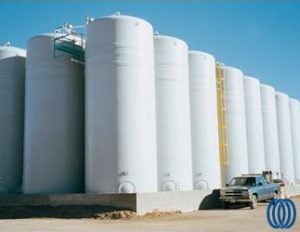
It has been said that in the corrosion equipment world, resin choice matters as much or more than anything else. While some may debate that statement, it is clear that when it comes to resisting corrosive attack from chemicals, resin does the heavy lifting. After all, it is the resin in the corrosion liner that resists attack first, not the fiberglass reinforcement. And resin is also the matrix that holds laminates together; decomposing resin = decomposing laminate. So selecting the best resin for the particular service in question is important if you want maximum performance and longevity from your corrosion equipment.
It may seem obvious, but you probably want maximum performance and longevity from your corrosion equipment for one reason: LOWEST LIFETIME COST. The difference in purchase cost between corrosion equipment fabricated with inexpensive and inappropriate resin and those fabricated with the right resin can appear important, and of course, it is. However, of more importance is lifetime cost.
For example, the purchase cost of an FRP tank intended for high temperature brine solution and fabricated with an isophthalic resin (which is typically suitable for lower temperature brine) could cost 30% less than one made with premium vinyl ester (which is more suitable for higher temperatures). For a 12′ diameter 15,000 gallon tank, that could be $30,000 for vinyl ester and $21,000 for the isophthalic. Sounds like a big difference, right? Except that the vinyl ester tank can reasonably be expected to last 12-15 years before needing maintenance, and the isophthalic tank 2-4 years. This is not an exaggeration; the tank made using the right resin will probably last several times longer.
Let’s look at the maintenance costs. Relining both tanks in our example will require the same amount of labor and materials, with a cost of about $10,000. After 12 years the vinyl ester tank may still not need relining, but the isophthalic tank may need relining every 4 years, or three times during that same 12 years. The relining cost for the isophthalic tank is then $30,000. The tank made with the cheaper resin cost $21,000 more over 12 years ($21,000 + $30,000 = $51,000 vs $30,000 for the vinyl ester tank). And this doesn’t even account for the cost of taking the tanks offline to perform the maintenance, something that has to be done more times for the isophthalic tank than the vinyl ester tank.
What if no maintenance is performed and the isophthalic tank is simply replaced every 4 years? The economics are worse that way. The isophthalic tanks costs much more than the vinyl ester tank over the same time period ($63,000 vs $30,000).
OK, given that you decided you want maximum performance and longevity from your corrosion equipment in order to minimize lifetime cost, how do you get it? Pretty easy, actually, just inform your tank fabricator you want to minimize lifetime cost, not purchase cost. If you are the end user of the equipment, find out what the “best” resins are for your particular service by asking your engineer, then examine all bids you receive to make sure those resins are called out. If you are the engineer on your project, contact resin manufacturers for their recommendations for that service, then state the recommendations, using full brand name, in the project specifications.
Minimizing lifetime cost, that’s the where the smart money is! Make sure the project you’re working on has the right resin for the job.
